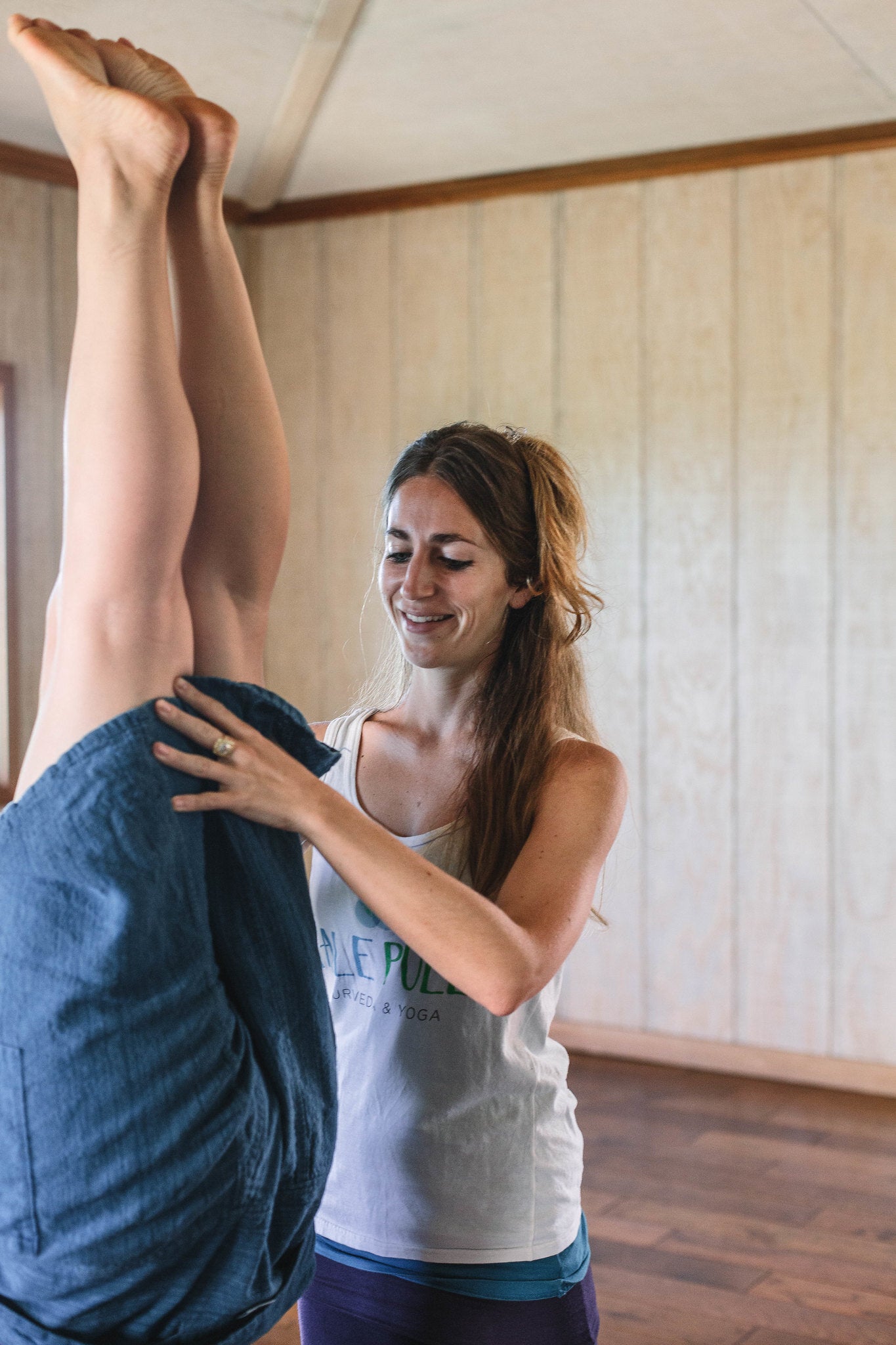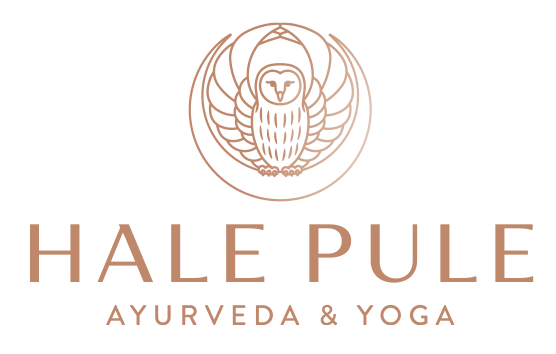
At the beginning of each Hale Pule Yoga teacher training, we take photos of the students upon arrival. At the end of the training we take a second picture. After one month of immersion in the teachings of Yoga, the differences are striking. They see how their posture changes as they break through limiting patterns in other areas of their life. For instance, a forward head position can signal fear and distrust (on the lookout for danger), or slouched shoulders can be a sign of insecurity or self-judgment, which is tamas, darkness and inertia. As the students clear fear and distrust by pointing rajas (activity) toward sattva (light), their energy flows and alignment becomes more natural. This is a good reminder of how Yoga affects every aspect of life.
Yoga asana and Yogic living
The gift of being in a body comes with the responsibility of understanding how to use it properly. Yoga asana is one tool to do that. When you focus on natural alignment in Yoga asana, it creates consciousness that you can carry into how you sit, walk and stand in the rest of life. Likewise, if you nurture good alignment in daily life, you can avoid common pitfalls, such as hyperextended elbows and knees, in your asana practice. If you routinely push your body beyond its limits, or unnaturally yank on delicate joints and tendons, you will experience the opposite of Yoga – disconnection and pain.
The purpose of Yoga asana is to make your body comfortable enough to sit in meditation so that it's not a distraction for your mind. This provides you the opportunity to experience the true essence of Yoga – self-realization. The connection that results between body, mind and spirit brings ease, comfort and vibrant health in all of life.
Tips for great alignment
Patterns of alignment in your body are learned and can be easily unlearned at any point in your life. Throughout the rest of the day, tune in to your body to see your tendencies. Do you lean into one hip? Do you slouch? Is your pelvis tilted forward? Do you walk with splayed feet? Once you identify your body’s learned patterns, you can begin to retrain yourself to work within your natural range of motion. Here are a few tips to guide you along the way:
-
Respect the natural direction of your body. All parts of your body have different ranges of movement that should be respected in asana and in life. For instance, the way virbhandrasana B and trikonasana are commonly taught (with the feet perpendicular to each other and hips turned to the side of the room) places unnecessary strain on the knees and imbalance in the hips. Look beyond the modern approach and listen to your most honest teacher – your own body. And remember: asana should not cause pain in your body, during or after your practice.
-
Find your natural posture. Stand with your buttocks, backs of your shoulder blades and back of the biggest part of your head against a wall (your heels will be slightly out from the wall to account for the thickness of your buttocks). There should be natural curves in your spine. Pay particular attention to your lower back; it should be neither flat, nor excessively curved. Have someone check you from the side so that the pointed bone in the side of your ankle lines up with the middle of the side of your knee, hip and shoulder and with your ear lobe. You can check in with a wall anytime, anywhere. When you find your natural posture, breath and relax into it.
-
Learn to feel without looking. Using mirrors or photos in asana may be helpful to identify patterns, but the more you focus on feeling alignment in your body without visual aids, the better your alignment will become. The asana will deepen as well. If you’re really not sure what alignment should look like, work with a well-trained Yoga teacher or sign up for one of our Yoga consultations on Zoom, FaceTime or Skype.
-
Relearn how to sit down and stand up. In addition to improving strength and flexibility in the hips, this simple sit down/stand up practice retrains alignment in your ankles, knees, hips, pelvis – all of which support a strong spine.
-
Find the floor. Over time, chairs and soft couches can weaken muscles and encourage tight hips. Sitting on the floor during meditation and meals (using as many pillows as necessary to feel comfortable) opens the hips and legs and strengthens muscles along the spine.
-
Grab a prop. Blocks, pillows, cushions and straps are all helpful tools during asana practice, but the ego can sometimes prevent us from using them. You’ll get much more out of a pose from using a block or a cushion to modify than you will from straining to find the full expression before you are ready. Using props will allow you to build a strong foundation and progress in a balanced manner.
When we use our bones and muscles the way they were intended, we can experience the true joy of existence – living without pain or discomfort for the rest of our lives. Focus on your alignment on and off the mat and you’ll understand the true essence of Yoga as a daily practice.
If you want to understand how to apply the teachings of Yoga to all parts of your life, explore our learning opportunities.
